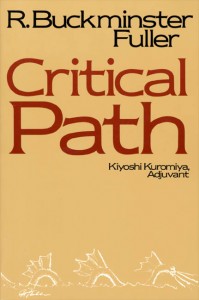Fuller observed that when he did things for the benefit of others, it had a positive effect on his life, but when he did things merely for his personal benefit, the outcome was negative. This eventually led him to the proposition that if he dedicated his life to the betterment of humanity, he would achieve the greatest positive outcome. So he decided to live his entire life as an experiment to prove or disprove this proposition. He writes (p. 145):
I assumed that nature would "evaluate" my work as I went along. If I was doing what nature wanted done, and if I was doing it in promising ways, permitted by nature's principles, I would find my work being economically sustained—and vice versa, in which latter negative case I must quickly cease doing what I had been doing and seek logically alternative courses until I found the new course that nature signified her approval of by providing for its physical support. Wherefore, I concluded that I would be informed by nature if I proceeded in the following manner:
(A) committed myself, my wife, and our infant daughter directly to the design, production, and demonstration of artifact accommodation of the most evident but as-yet-unattended-to human-environment-advantaging physical evolutionary tasks, and (B) paid no attention to "earning a living" in humanity's established economic system, yet (C) found my family's and my own life's needs being unsolicitedly provided for by seemingly pure happenstance and always only "in the nick of time," and (D) being provided for "only coincidentally," yet found (E) that this only "coincidentally," unbudgetable, yet realistic support persisted, and did so (F) only so long as I continued spontaneously to commit myself unreservedly to the task of developing relevant artifacts, and if I (G) never tried to persuade humanity to alter its customs and viewpoints and never asked anyone to listen to me and spoke informatively to others only when they asked me so to do, and if I (H) never undertook competitively to produce artifacts others were developing, and attended only to that which no others attended
then I could tentatively conclude that my two assumptions were valid: (1) that nature might economically sustain human activity that served directly in the "mainstream" realization of essential cosmic regeneration, which had hitherto been accomplished only through seeming "right-angled" side effects of the chromosomically focused biological creatures; and (2) that the generalized physical law of precessional behaviors does govern socioeconomic behaviors as do also the generalized laws of acceleration and ephemeralization.
